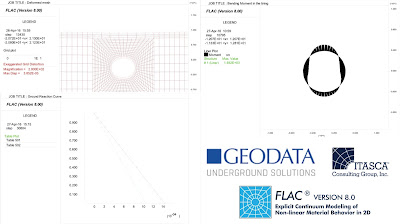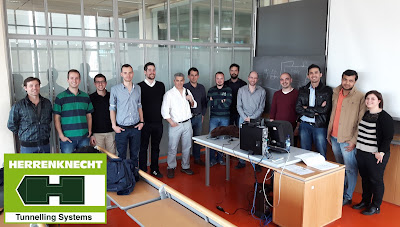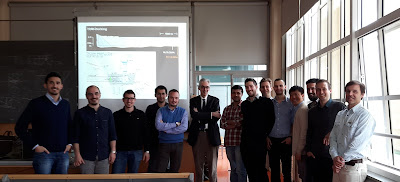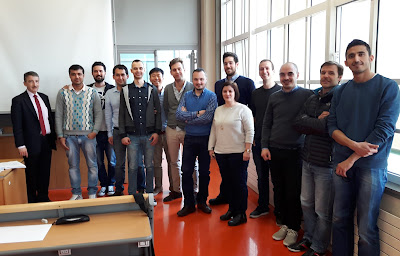This week in T&TBMs Master was devoted to the study of TBM advancement with lessons held by experts coming one more time from Geodata Engineering S.p.A. First some simplified 2D numerical models were defined to simulate a TBM driven tunnel behaviour and then we analysed as well the real parameters obtained from the machine driving and monitoring system.
Once again, Vincenza Floria (Geodata) gave us a two day practical course on FLAC 8.0 to model the advancement of the machine. The approach adopted for the simulation was the application of a relaxation factor known as the stress reduction method by Panet and Guenot (1982), in order to allow some gradual convergence of the excavated section before the installation of the lining. An interesting task required to perform a parametric analysis to understand and verify the influence of some factors as ground or lining properties and natural state of stress on the model behaviour. From this basic use of the software I could understand that it is a very powerful tool that requires a deep knowledge of the governing background theories.
 |
| Excerpt of a parametric analysis exercise done with FLAC 8.0 |
Finally Giampiero Carrieri (Geodata) held an outstanding lecture on TBM monitoring, not only regarding the machine driving parameters but also of the interaction between the excavation and the already existing structures. He focused on the importance of a well defined monitoring plan to take into consideration as a key tool for the Risk Management Plan, properly defining thresholds and countermeasures to be taken. His approach for the introduction of the topic was based on the presentation of several case histories from his most relevant projects.
 |
| Giampiero Carrieri and the students after his lecture on TBM Monitoring |








